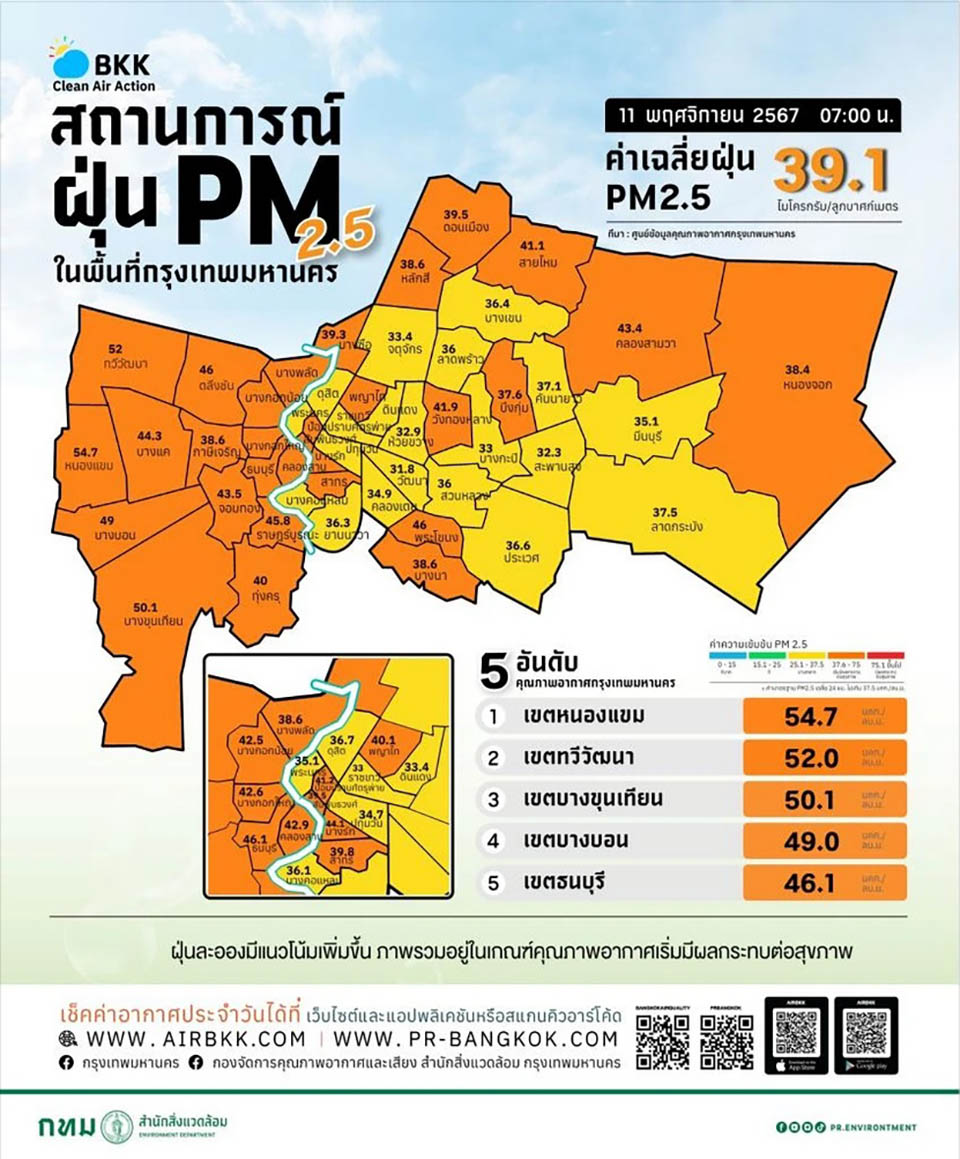
BANGKOK, Thailand – According to the Bangkok Air Quality Information Center, recent measurements of PM2.5 particulate matter in Bangkok and surrounding areas have exceeded safe limits, reaching levels of 26.5-53.4 µg/m³, categorized as “orange,” which indicates a risk to health.
The measurements, recorded from November 11 to 17, show that air ventilation is “poor to weak,” with atmospheric layers near the surface alternating between open and closed conditions. This contributes to an increase in dust concentration, which is expected to persist with partially cloudy skies today.
The 24-hour average PM2.5 levels ranged from 29.1 to 54 micrograms per cubic meter, surpassing the acceptable limit of 37.5 µg/m³. A total of 37 areas in Bangkok were affected, and the air quality is now considered harmful to health.
Health Recommendations for Residents:
General Public: It is advised to wear PM2.5 protective masks when going outdoors and limit outdoor activities or exercise, especially strenuous activities. Pay attention to symptoms such as coughing, difficulty breathing, or eye irritation.
At-Risk Groups: People with pre-existing health conditions should take extra precautions by wearing masks and avoiding outdoor physical activities. Those experiencing symptoms should seek medical attention promptly.
Air Quality Index: The air quality across most monitoring stations is currently in the “beginning to affect health” range. The Meteorological Department forecasts partial cloud cover this week.
Factors Contributing to the Dust Crisis: Between November 11 and 17, weak atmospheric ventilation combined with alternating atmospheric conditions is expected to cause further increases in dust concentrations. Satellite data from NASA reveals no abnormal hotspots in the area, suggesting that the increase in dust is not due to large-scale fires or heat sources.
Government Response: The Department of Environment has been coordinating with relevant agencies to intensify measures outlined in the dust pollution control plan. These efforts aim to reduce the severity of the PM2.5 situation and its impact on public health.
Public Participation Encouraged: The public is encouraged to adopt behaviors that can reduce dust pollution, such as:
- Regularly cleaning homes by dusting.
- Avoiding waste burning and incense use.
- Planting trees to absorb pollutants and trap dust.
- Using public transportation.
- Turning off engines when parked and maintaining vehicles to prevent excessive exhaust emissions.
Residents can stay informed about air quality by checking data through:
The AirBKK app
www.airbkk.com
Facebook pages: Bangkok Environment Office, Air Quality and Sound Management Division, Bangkok Metropolitan Administration
LINE ALERT notifications
In case of observing pollution sources, the public is urged to report them via Traffy Fondue.









